A few days ago I was reading a post here on steemit about the Arctic, how beautiful it is, how humans and animals could adapt to the cold environment and how it was just all fascinating and I was very happy for the knowledge and was wishing I had the opportunity to visit it. A few hours later I turned the TV on and there was a documentary on how this beautiful place which I was just thinking about (the Arctic) was being destroyed by global warming. I was depressed knowing that I could never get to meet a beautiful Arctic if this destruction caused by climate change continues so i decided to make a post here alerting the Stemians about the Arctic's destruction and how it would affect us all and also ways we could help to ensure that the Arctic stays intact. I'll like you to read this to the end.
Stats have shown that our planets temperature has increased rapidly over the years and most of its causes has been attributed to human activities. Some human activities especially the burning of fossil fuels (such as coal, natural gas and oils),and the destruction of natural vegetations by clearing land have contributed immensely to the increase of methane, carbon(iv)oxide and other greenhouse (Heat-trapping ) gases in our planets atmosphere. The concentration of carbon dioxide in the atmosphere has risen by up to 35% and earth's temperature has increased by about 0.6°C since the beginning of the industrial era .
Adding this greenhouse gases and carbon dioxide to the atmosphere by our activities could bring about persistent and significant changes to our climate which includes a very rapid increase in the average earth's temperature from 1.4°C to about 5.9°C before this century elapses. The unstable climate also leads to distortions to oceanic and atmospheric distribution and circulation patterns, accelerated sea level rise and precipitation variations which would result to significant effects on coastal areas, water resources, plant and animal species and the human well being and health.
On this article, we are going be looking at how the climate change and ozone depletion destroys the Arctic region and how the destruction of the Arctic region might change the world as we know it.
CLIMATE CHANGE IN THE ARCTIC
 image source:pxhere.com
image source:pxhere.comThe Arctic region is located at the northern part of the earth. It comprises of the Arctic Ocean and seas adjacent to it, parts of the world such as Northern Canada, Iceland, Finland, Norway, Sweden and Russia. The Arctic region's land are mostly covered by snow and ice covers and also underground ice which contains tundra. Water bodies in the Arctic are not left out of this frozen state. Arctic Seas are most times frozen to solid ice which you can walk on.
Over recent years, strong evidence have shown the effects of global warming in the Arctic such as the rising sea level, increasing temperatures, the melting of glaciers and the reduction in the thickness of Arctic sea ice.
Precipitation has been shown to increase by 8% in the last Century across the Arctic regions. Regional variations in the level of precipitation has also been recorded. Normally precipitation would be good for the region if it came in form of ice but the precipitation recorded in recent years has been more of rain. Occurring more in winter season and less in spring. This increased rate of rainfall falling on the already existing snow causes the snow to melt rapidly .
All these records put together shows that the speed, amount and the pattern of warming which have been experienced in the past few years are unusual and would greatly affect the region and our planet as a whole.
HOW ARCTIC WARMING GENERALLY AFFECTS THE EARTH
The warming of the Arctic regions has great impact and consequences on the world at large and it would greatly change our global climate.
Here are some of the ways the Arctic warming would influence our planet
* Ocean circulation
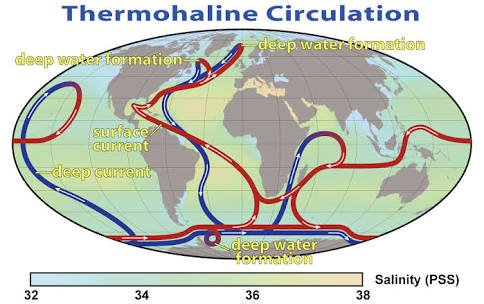.jpg)
A major change that would greatly affect our global climate is the disruption in ocean circulation patterns. The sun's energy is mostly being transported from the equator to poles through the movement of ocean waters, which is caused by the difference in the salt and heat content of ocean waters.
Presently the extensions to the north of the gulf stream of the Atlantic Ocean, provides the precipitation moisture that falls on northwestern Europe and also warms wind on those areas. Ocean waters when moving to the north, becomes denser and cooler till they become heavier than the shallow waters and sink to the bottom of the ocean. The sinking of this waters happens particularly in the seas that drive the heat and salt circulation such as the seas of the northern parts of Atlantic Ocean and the Labrador sea. The sinking of water in these area happens in other to provide the heat that keeps the European countries warmer than some regions of North America in winter periods.
Formation of sea ice can also make water at the surface of these water bodies denser and saltier because when the ice is being formed, salts are rejected. This salty and dense water flows down to deep ocean basin which contributes to the formation of deep-water so more heat can be drawn from the tropics to the north.
This whole process is tactfully and exquisitely balanced; Now if this water bodies becomes less salty due to precipitation and fresh water runoff from the melting ice or also due to the temperatures not cold enough to form ice that makes the waters more salty, the rate at which deep water is being formed will be reduced and the amount of heat pulled to the north from the tropics by ocean waters to make winter seasons in Europe moderate would drastically be reduced.
If the heat and salt circulation in ocean waters is slowed down due to global warming, it would have several effects globally because the continued turning of this dense water is very important for taking carbon dioxide to areas in deep ocean. Slowing down this circulation of carbon dioxide would mean more carbon dioxide concentrating in the atmosphere which would lead to intense global warming. Also, some marine species in deep ocean that needs the gas might go extinct.
Global warming's effect of slowing down this circulation would also cause heat not to be circulated to the northern regions of our planets and might cause the region to be cooled for decades while other parts of the planet is being warmed massively.
* Reflection Of The sun's Ray By Arctic Ice.
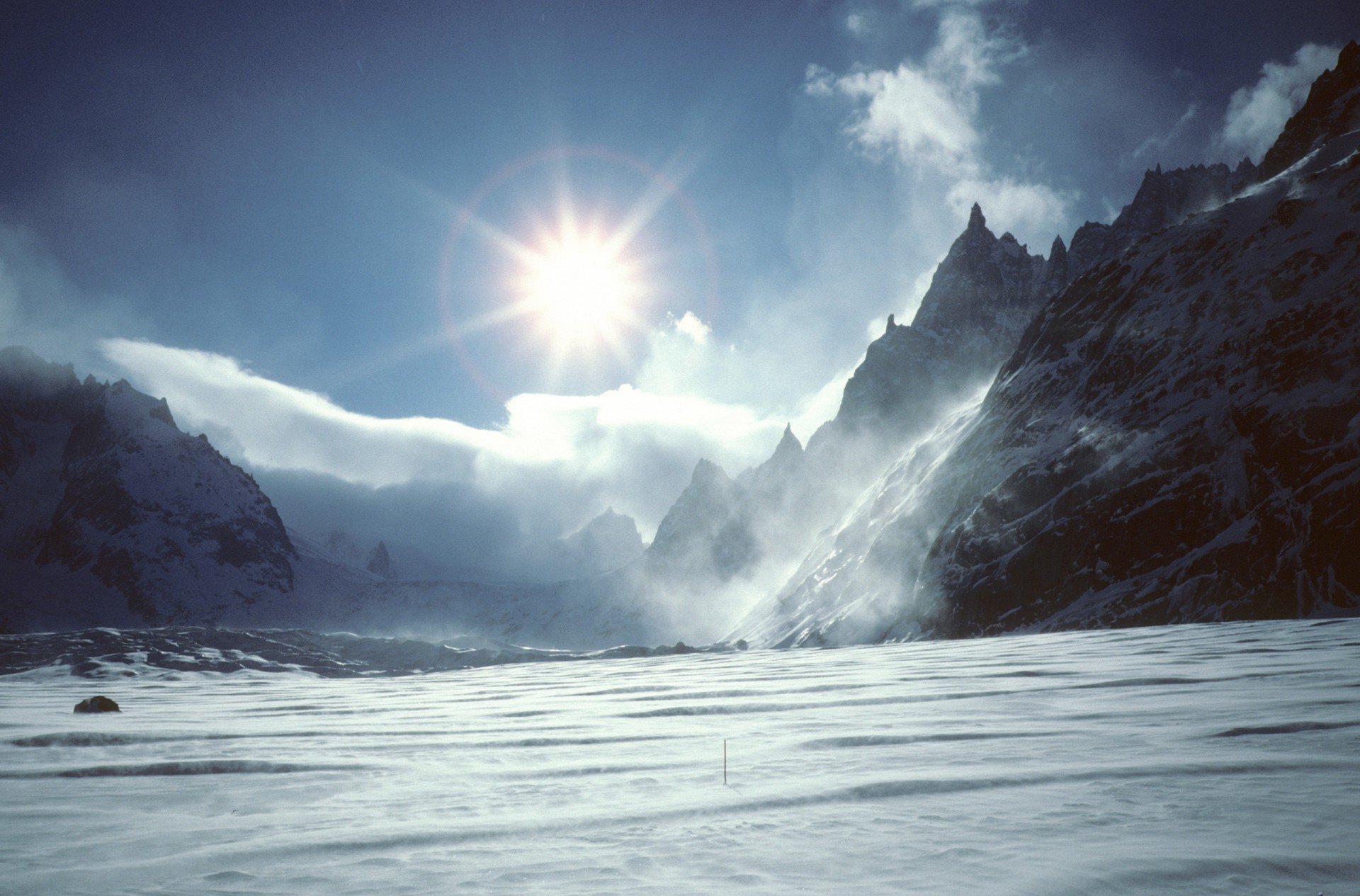
Image source
The Arctic regions are mostly covered by snow and ice. This ice and snow has the ability to reflect most of the the sun's ray and energy that gets to it back to space because of its bright and white nature. This is one of the reasons why the region stays cold.
As greenhouse gases accumulate and increase the warming observed in the Arctic, these snow and ice would melt reviling land surfaces and water surface below it which are more darker than the ice and snow and can absorb more of the sun's rays and energy instead of reflecting them. The absorbed heat further causes more melting of the remaining ice and snow thus reducing surface reflectivity of the sun's rays by ice and snow.
As this areas are being rid of ice and snow, the succession process might come into action creating forests which further stops the ice from reflecting the sun's energy. One might wonder, The establishment of forest might be very good for reducing the amount of carbon dioxide concentration in the Atmosphere and reduce and moderate warming ,but hey , the retardation of surface reflectivity would cause more harm and exert larger influence on our climate than the effects of carbon uptake by trees.
Another human influence that affects surface reflectivity by ice is the burning of fossil fuels that produces dark soot which when deposited on ice surface makes the dark and cause them to absorb more heat leading to their destruction.
* Rise in sea levels
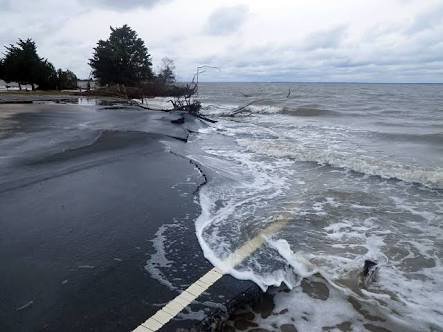.jpg)
Image source :Wikipedia
Climate change in the Arctic causes sea level rise due to melting of Arctic ice which would mean more water being released into oceans and seas causing them to cross their boundaries and would greatly cause harm to inhabitants of land. The density of water and it's amount is greatly influenced by the melting of Arctic ice caused by global warming. The melting of the ice has shown rapid Increase in the last 15 years and is showing more trend of increasing more rapidly if nothing is done.
Rise in sea levels would have several serious impacts on islands, industries, deltas, harbors and coastal areas and people inhabiting this regions. There would be high salinity of estuaries and bays, erosion in coastal areas, subsequent events of coastal flooding and low lying islands such as Marshall island, Tonga island, Antigua and Maldives islands are also at risk of being covered by the raising sea.
Over 17 million people living in Bangladesh are living not up to 1 meter above sea level and they are at high risk of being attacked by flood due to rise in sea levels. Also, in the southern parts of Asia in places like Bangkok, Dhaka, Bombay, Manila and Calcutta and some Cities in the United States like, Florida and Louisiana are most likely to be affected by future rise in sea levels.
* Reduction in Arctic resources to the world
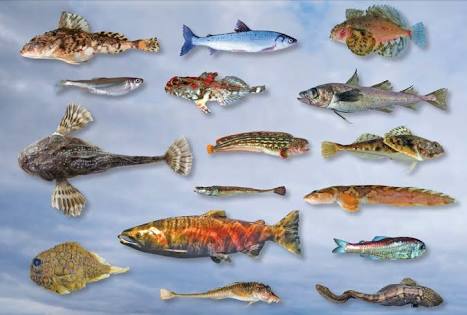.jpg)
Image source
Many resources are being provided by the Arctic regions to the World. Climate change will greatly affect the availability of these resources. Some Arctic animals such as whales, birds, seals, fishes have contributed immensely to the worlds trade by their sales in markets. Also the Arctic seas are some of the world's most productive and oldest commercial fishing areas, which provides large income for some countries. A good example is Norway which is one of the world's largest exporters of fish. The Arctic also have minerals like oil and gas found in places like Russia and others like gemstones and fertilizers. Climate change in the Arctic might cause serious problems associated with harvesting these minerals.
HOW THE WARMING ARCTIC WOULD AFFECT ANIMALS.
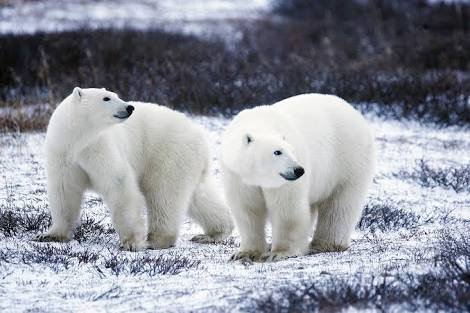.jpg)
Different animal species in the Arctic are admired all over the world for their beauty, strength, and ability to make it through and survive under the harsh Arctic environment. Animals in the Arctic includes polar bears, Reindeer and many fish species, seals etc. This animals form a great part of the Arctic Nations economy, culture and also serve as diet for people living in the Arctic.
Change in the climate as a result of global warming will greatly impact these animal species in different ways that would affect the efforts to their conservation.
The Arctic region mostly comprises of oceans, and most of the living organisms Inhabiting the Arctic rely on the productivity of these water bodies for survival, and this water bodies are highly dependent on climate. Now climate change in this region would have great influence on these animal species. For example, the incident of little ice in the St. Lawrence gulf in Canada around the following years; 1967, 1981, 2000, 2001, 2002 led to the death of all the seal pups born on that period which would normally be in their thousands.
Here are some of the ways Arctic warming would affect some animals.
###Polar bears
Polar bears as we all know are mostly dependant on sea ice. They hunt seals living in
This shows that the stability and changes in sea ice are critically important and also that the declines in and destruction of sea ice would have a devastating effect on polar bears
Climate change in the Arctic would also lead to the increase in the rates of bear deaths directly. The increased intensity and rates of spring rains makes some bear dens to collapse which results to the death of cubs and their mothers.
The breakup of ice due to climate change in these regions could separate bear den sites from their feeding areas, and this poses serious
threat to the cubs because they would not be able to swim to feeding areas and this could lead to their deaths.If there is much loss of the Arctic sea-ice cover, it would be very difficult for polar bears to survive as a species and this huge loss of sea ice have been projected by some climate models to occur before this century elapses and the only option Polar bears might have in other to survive would be to adapt to living on land during summer but I really think that competition, increased human interactions and some other factors would only pose more threat to their survival. Losing polar bears might have rapid and significant consequences on the the ecosystem the occupy currently so we really have to do something to ensure that sea ice is preserved so we won't lose this wonderful creatures. (Read on, what we can do to help is coming up soon on this article)
Ice dependent seals
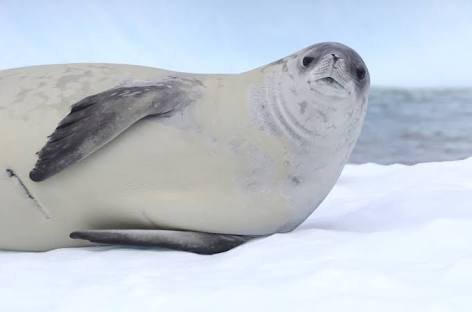.jpg)
Some seals like the ribbon seal, ringed seal and bearded seal depends mostly on sea ice and would be greatly affected by its reduction caused by climate change because they give birth to their pups and nurse them on the Ice and also uses it as a resting platform.
The seal species that is likely to be mostly affected by the loss in ice are the Ringed seals because everything related to and every aspect of their lives are linked to sea ice. This seals needs sufficient ice and snow cover in other to make lairs and also the ice has to be very stable during the spring so that the pups might be reared successfully.
If there is ice break at the early stages of the pups life, it could result to the separation of the pups from their parents which could lead to the death of the newborns.
The case of adapting to a life on land when there is absence of sea ice during summer as it is for polar bears can not be said for the ringed seals because through their whole lives, the rarely come onto land. So hauling themselves to land during ice scarcity would be a huge Change to the species way of life or behavior. Also, giving birth to their pups on land would greatly endanger them and increase the risk of them being attacked and killed by predators. Some other ice-dependent seals that might be endangered as sea ice depreciates are the spotted seal which breeds only on ice edge and the harp seal which its survival Is associated with sea ice.
Some seal species however like the grey seals and harbour seals are likely to survive if the worst happens and most of the Arctic ice have been destroyed because they are more temperate and would survive in a less ice covered Arctic ( at least we won't lose all the Arctic seal species if the worst happens)
Seabirds
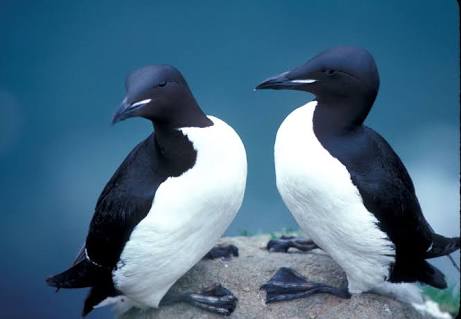.jpg)
Climate change and loss of sea ice in the Arctic region would pose serious threat to and would negatively impact some Seabirds such as the little auks and ivory gulls. The ivory gulls for instance is very much associated with sea ice through out its life because they make nests and breeds on rocky cliffs which offer protection from predators for both them and their newborns and they also hunt for fishes from cracks on the sea ice.
The continued retirement of the sea ice edge further from the suitable nesting areas of these birds caused by global warming and climate change would result to serious consequences. The Ivory gulls population has been recorded to
have declined by 80 percent in Canada in the past 20 years so something must be done and fast to avoid the possibility of these birds going extinct.
Generally, climate change and declination of sea ice poses great risk to marine mammals and seabirds living in the Arctic beyond the loss of forage bases and habitats. Various other risks could also be seen such as an increased risk of contacting diseases due to change of temperature, increased risk of pollution as increasing precipitation brings more river borne and atmospheric pollution northward, increased level of competition due to the expansion of ranges by temperate species and some other impacts that could be recorded as human development and traffic increases in areas that were previously inaccessible and covered by ice.
HOW WOULD PEOPLE LIVING IN THE ARCTIC BE AFFECTED ?
.jpg)
Despite the harsh environment of the Arctic regions, many people have found a way to survive in it, and their activities and culture is being shaped by the cold Arctic environment they live in. Over time, they have been able to interact with their environment through skillful adjustments and careful observations in their lifestyles and in food-harvesting activities.
The major key to the way indigenous people living in the Arctic have been able to accommodate and survive through environmental changes in the Arctic is the flexibility and adaptability of their lifestyles, but in recent decades, rapid climate change combined with some other alterations in the Arctic are presenting new challenges for the Arctic indigenous people.
In the past few years, there have been reports by indigenous people living in the Arctic about the effects of climate change in their regions. In the Nunavut Territory of Canada, Inuits have noticed a reduction in ringed seals population in some areas, the declination and thinning of sea ice. There have also been reports of them seeing some insects and birds which are not usually found in this regions.
People living in the western Canadian Arctic (Inuvialuit) have also observed rapid increase in
lightning and thunderstorms which previously occurred rarely in this region. The Athabaskan people in Canada and Alaska have also been witnessing very dramatic changes in vegetation, weather and in the patterns of animal distribution over the last 50 years.
Herders of the saami reindeer in Norway too have observed that the prevailing winds which they rely on for smooth and easy navigation have become more variable and have shifted and are now making them to change their traditional travel routes.
Now if we are to compile the observations by indigenous people who live in Arctic regions, some common conclusion can be drafted although there are some regional variations. And these are
The quality of snow and sea ice are changing.
The weather conditions of some regions now seems unstable and unpredictable by traditional methods.
There have been a drastic increment of the amount of rainfall in winter.
Animal and plant species which could not be found before in the Arctic are now appearing.
Weather patterns in the Arctic are now changing.
There is a decline in sea ice and The timing and quality of sea ice is changing.
There is an increase in the rate of erosion in coastal areas due to storm surges.
There are cases of sun burns and skin rashes which had never happened before. The sun also feels stringing, stronger and sharp.
The changes in climate are occurring faster than the Arctic indigenous people can adapt.
Climate change is affecting these people so much and is a serious threat to their cultural survival.
As the Inuits perceive it, this region is now becoming an environment which is at risk due to the fact that, sea ice is now unstable and, vegetative covers are changing and animals which were formally found in specific hunting areas at a particular season are no longer found there. Local icescapes, seascapes and landscapes are now changing and becoming unfamiliar to them and is really making them to feel as if they strangers in their land.
WHAT CAN WE DO TO SAVE THE ARCTIC.
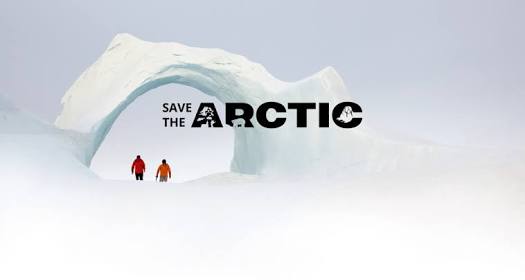.jpg)
We all can see from all that is in this piece that the Arctic is of great importance to the earth as a whole. Saving the Arctic is not just a simple task that one person would be able to carry out alone, we all have to be involved in our own little way in other to still keep our planet alive. Here are some of the things we could do to help save the Arctic ice from global warming and it's effects.
* Pay Close Attention
Many researches all over the world have shown that, we care more about the things we monitor and adapt our behavior to them. Just like the people that carry out fitness programs who would train very hard when they have something like an app that would monitor their lifestyle daily, the Arctic ice and changes in the Arctic can be monitored daily via satellite, with data available publicly (that is if you know the right place to look). Places like the National Snow and Ice Data Center is providing regular information and updates about the Arctic, and Blogs like the Arctic sea ice forum are also there for some technical discussions relating to the Arctic. So paying attention to the Arctic and knowing that it's destruction could affect us could be a start to how we could help save it.
* We should demand action
If we just sit back and watch the Arctic ice as it melts without doing anything then it would be a great loss to all of us. The main cause of Arctic warming is the continued emissions of carbon(iv)oxide and the only way we could control this emissions and save the Arctic is to demand actions from ourselves, our cities,our countries and also from the companies that produces the goods we consume.
Our world has a climatic boundary which supports life and specialist have estimated that we have almost used up our planet's carbon budget so something has to be done by us in other to reduce this emissions and fast.
How can we reduce this emissions?
First, we have to set our minds to it and try to reduce carbon emissions in the little way we can just as Gandhi rightly said: be the change you want to see in the world. We can start by buying green energy, flying and driving less to reduce emissions, turning our carbon emitting gadgets off instead of putting them on standby etc. You can choose any of these or something from the long list of what we can do to reduce carbon emissions and start doing them (draft out your carbon reduction plan now).
.jpg)
Image source:lifehacker.com
We can also contribute by supporting politicians and companies who are at the front line in the fight to stop carbon emissions and achieving a low-carbon future.
It a devastating irony that the melting sea ice which is caused by carbon(iv)oxide emissions from the burning of fossil fuels is now making it very easy to access and drill oil from this region. estimations have suggested that we keep most of the oil in the ground in other to keep our planet within a warming level of 2°C which is considered safe and this also applies to the Oil the Arctic too.
CONCLUDING THOUGHTS
Strong and quick actions which would be able to reduce these gas emissions are seriously required in other to change the future path of this warming induced by humans. Actions towards adapting to the already occurring changes are also needed.
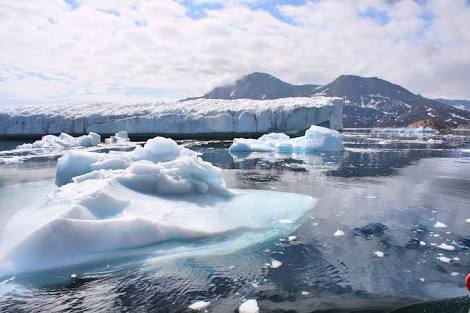.jpg)
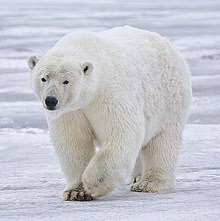.jpg)
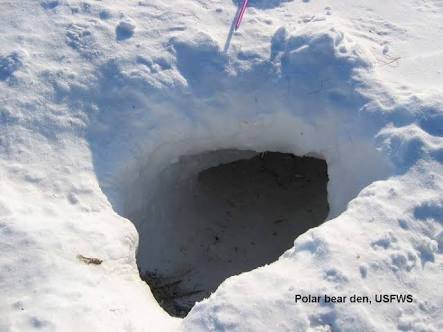.jpg)
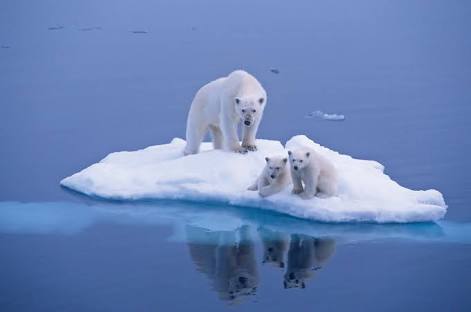.jpg)
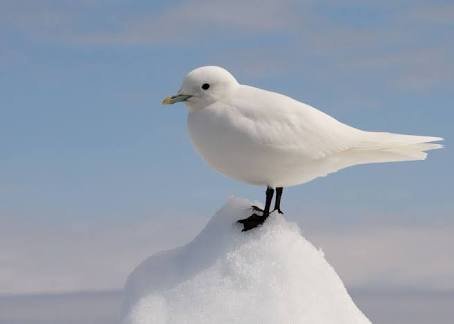.jpg)
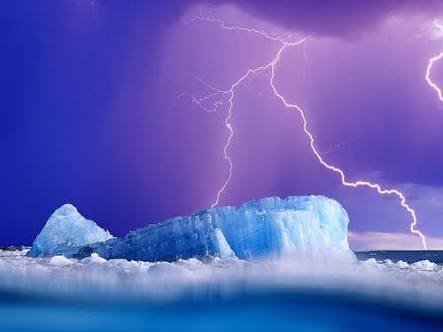.jpg)